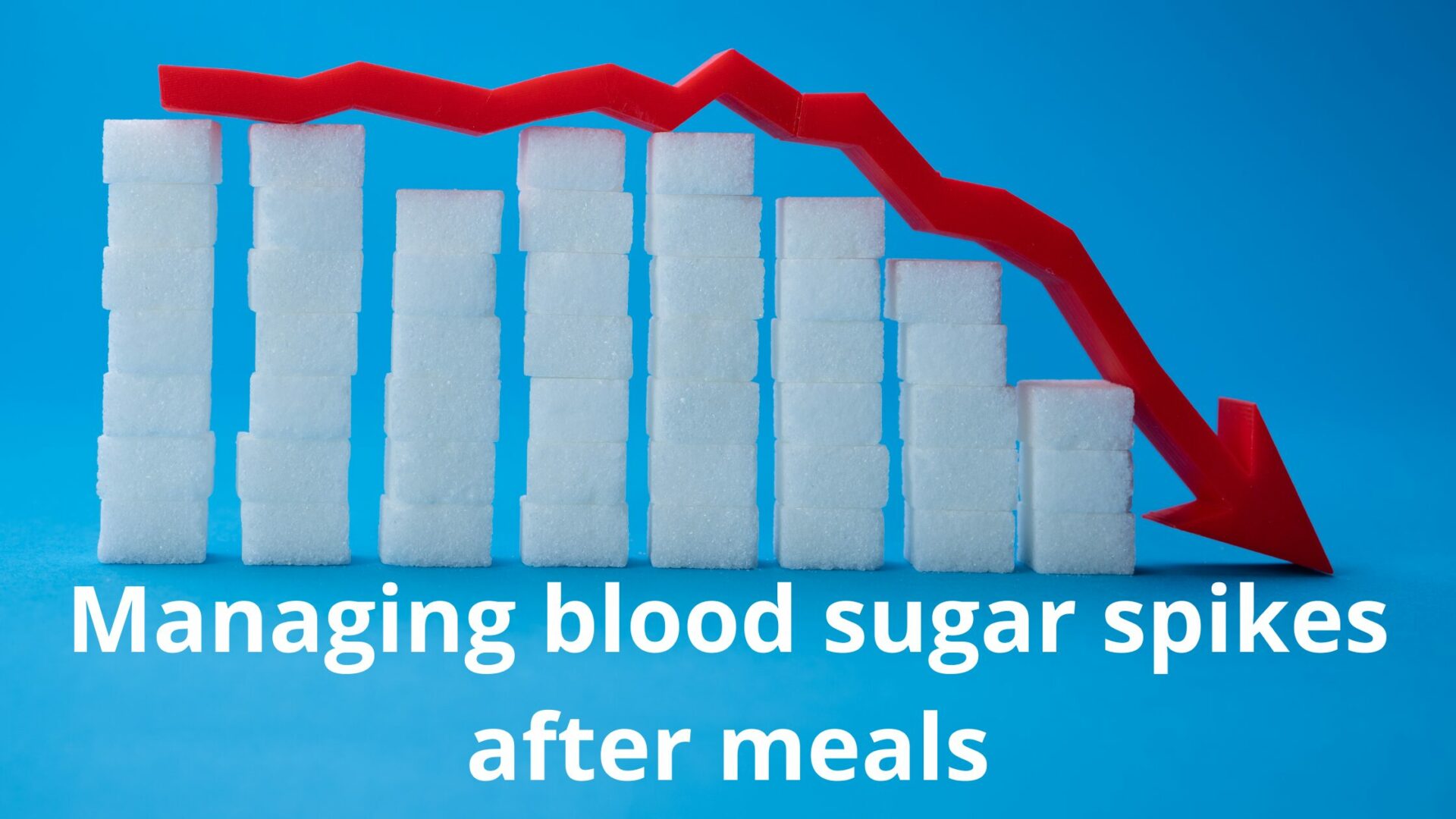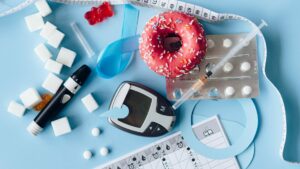Blood sugar spikes after meals typically range from 140 to 180 mg/dL. However, various factors such as age and dietary choices can cause levels to exceed this range.
The foods and drinks you consume can cause your blood sugar levels to rise rapidly or more slowly. For people with diabetes, managing these fluctuations is crucial, alongside determining the necessary insulin doses for meals and drinks
Defining ‘normal’ glucose levels can be complex due to varied clinical advice and personalized healthcare. Recommended glucose targets can differ between individuals.
This article offers the newest clinical advice regarding post-meal glucose levels, applicable to both diabetic and non-diabetic individuals, including insights on experiencing low blood sugar (hypoglycemia)

Table of Contents
What is an acceptable blood sugar spikes after a meal?
Referred to as post-meal blood sugar levels, monitoring your glucose levels after eating is crucial for your health, especially if you have diabetes.
Since food increases blood sugar levels, many guidelines prioritize the upper range of glucose levels rather than the entire spectrum typically observed before eating.
| After eating | |
|---|---|
| Adults with diabetes (see guidance) | < 180 mg/dL (1 or 2 hours) |
| Adults without diabetes (see guidance) | <140 mg/dL |
| Children and adolescents (see guidance) | no set recommendation, generally < 180 mg/dL |
| Pregnant people (see guidance) | < 120 (2 hours after) < 140 (1 hour after) |
Usually, about 2 hours after eating, your blood sugar levels should go back to normal. However, this can vary greatly depending on your diet, drinks, and insulin dosage.
The range of post-meal glucose levels varies for children, teens, and older adults with diabetes. Older adults may tolerate higher levels due to safety concerns like falls, especially if they experience hypoglycemia.
In its yearly guidelines, the ADA mentions that for individuals unable to detect hypoglycemia or prone to severe hypo events, less strict glucose targets may be suitable.
Although clinical guidelines generally agree, the recommended numbers can differ. Recently, many diabetes and medical groups advocate for personalized goals, which can fluctuate based on various factors, not just diet. These factors may encompass:
- age
- diabetes type
- insulin dosage
- exercise level
- existing health conditions
- medications
Crucially, there isn’t a standard definition of what your blood sugar levels should be at any specific moment.
It’s important to talk to your doctors and diabetes care team about your goals and target ranges, including after meals. Managing diabetes and overall health involves more than just tracking blood sugar levels; it also includes mental health considerations.
Keep in mind, blood sugar levels are simply data points. They don’t define you or determine if you’re succeeding or failing in managing your diabetes or overall health.
How does food impact your blood sugar levels?
Your body processes all food and beverages, converting some into sugar and energy for use.
Foods high in glycemic index, like white bread and sugary/starchy foods, digest quickly and cause rapid blood sugar spikes. On the other hand, foods with lower glycemic index, along with fats and protein, digest more slowly, resulting in a gradual increase in blood sugar levels.
That’s why consuming candy or drinking orange juice causes a rapid spike in blood sugar, unlike eating pizza or crackers with peanut butter.
For individuals with diabetes, their bodies struggle to produce or utilize insulin effectively, leading to elevated blood sugar levels. This differs from those without diabetes, whose bodies naturally manage glucose levels by producing insulin in response to food and drink intake.
What are some supplements that can assist in reducing blood sugar levels?
Various supplements, including cinnamon, ginseng, herbs, vitamin D, magnesium, probiotics, and compounds like berberine, may aid in reducing blood sugar levels. However, individual results can vary due to factors such as duration of use, supplement quality, and your specific diabetes condition.
Consult your doctor before trying supplements, especially if you’re on diabetes medication or insulin, as some supplements may interact with medications and potentially lower blood sugar too much. Your doctor may need to adjust your medication accordingly.
Introduce one new supplement at a time and monitor your blood sugar regularly over several months. This approach helps you and your doctor assess its impact effectively.
When to see your doctor
Whenever you’re concerned about your blood sugar levels, it’s important to consult your doctor or healthcare team.
If you notice blood sugar spikes after eating (or at any other time), it’s worth discussing potential adjustments to your care plan. This could involve tweaking insulin correction doses for your meals, as they might not be precise. You may also need to modify your basal insulin doses if they’re causing glucose levels to be out of range after eating.
Do not adjust your medication doses or diabetes treatment plan without consulting your healthcare provider first.
Conclusion
Healthy post-meal glucose levels typically range from 140 to 180 mg/dL, as recommended by diabetes experts and medical professionals. However, various factors, such as the type of food or drink consumed, can cause blood sugar to rise even further.
Kids, teens, and older adults with hypoglycemia may need different blood sugar targets after meals. Talk to your diabetes care team to find the right goals for you.






